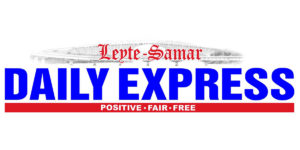
TACLOBAN CITY —Tingog party-list, through Representative Jude Acidre, played a key role in supporting the launch of the Lakbay Museo ng Paghilom, the country’s first mobile museum dedicated to the stories of victims of extrajudicial killings (EJK), held on Tuesday at the South Wing Annex Lobby of the House of Representatives.
The mobile museum is an initiative of Project Paghilom, founded by Fr. Flaviano Villanueva, a 2025 Ramon Magsaysay Awardee, and was mounted in observance of National Human Rights Consciousness Week. The exhibit received additional backing from AKBAYAN Party-list Representative Chel Diokno, highlighting broad legislative support for human rights advocacy.
The museum features curated artifacts, images, and personal narratives of EJK victims, including poignant items like the shirt of three-year-old Myca Ulpina, killed during a police operation in Rizal. Central to the installation is a life-sized reproduction of the oil painting “Paghilom”, mounted on a collapsible fabric tension wall, serving as both visual and emotional anchor. The immersive three-part exhibit guides visitors through stages of loss, lived realities, and resistance through memory.
During the launch, Fr. Villanueva stressed the critical role of memory in preserving truth and dignity:
“To remember the victims by name, by story, by the fullness of their humanity—is to declare that the victims were not statistics, not collateral damage, not disposable. Because memory protects truth when lies become louder. Memory preserves humanity when history begins to harden. Memory keeps us from building a future on erasure.”
Rep. Acidre highlighted TINGOG Party-list’s commitment to human dignity and collective responsibility, saying,
“This museum is not about politics. It is about people. People whose stories deserve to be told. People whose pain deserves to be acknowledged. People whose lives—and deaths—must teach us to never again allow fear to be weaponized against the poor.”
As part of ongoing support for families affected by extrajudicial killings, the Office of Rep. Acidre also distributed 100 backpacks to members of the Paghilom Youth on December 6, 2025, benefiting children and families of EJK victims under Project Paghilom.
The Lakbay Museo ng Paghilom remains open to the public from December 9 to 11, 2025 at the South Wing Annex Lobby of the House of Representatives, aiming to foster empathy, preserve memory, and strengthen national reflection through storytelling rather than statistics.
(LIZBETH ANN A.ABELLA)




